
Video presentation and resource packet about the 1807 treason trial of Aaron Burr.
- Subject:
- American History
- Government and Civics
- History/Social Sciences
- Material Type:
- Visual Media
- Author:
- Preservation Virginia
- Date Added:
- 09/08/2021

Video presentation and resource packet about the 1807 treason trial of Aaron Burr.
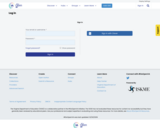
Changes in voting qualifications and participation, the election of Andrew Jackson, and the formation of the Democratic Party"”due largely to the organizational skills of Martin Van Buren"”all contributed to making the election of 1828 and Jackson's presidency a watershed in the evolution of the American political system.
This is a remix of a previous source: https://goopenva.org/courses/the-1828-campaign-of-andrew-jackson-and-the-growth-of-party-politics
"Making Connections" section has been added.
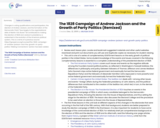
Changes in voting qualifications and participation, the election of Andrew Jackson, and the formation of the Democratic Party"”due largely to the organizational skills of Martin Van Buren"”all contributed to making the election of 1828 and Jackson's presidency a watershed in the evolution of the American political system.
This is a remix of a previous source: https://goopenva.org/courses/the-1828-campaign-of-andrew-jackson-and-the-growth-of-party-politics
"Making Connections" section has been added.

Author: Daniel Shogan, Danville Museum of Fine Arts and History Students will learn about the 1883 Massacre in Danville, Virginia as an example of violence against African Americans. Within the context of the massacre, they will be shown primary documents from the event. These documents will provide the students with not only a lens into the Danville of the nineteenth century, but also provide them with an opportunity to think critically about the documents. After careful discussion of the events and outcomes of the massacre, the students will be given vocabulary worksheets that help to define and underline the most important elements of the narrative.
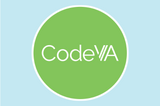
See computer science integration opportunities in middle school history in this crosswalk of the two disciplines.

Technology has not just changed over time. It has changed the way citizens live their lives. This lesson will describe responsible behaviors that are associated with using information and technology.
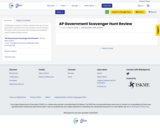
Challenges students to think outside of the box to find examples of government around their school campus. All areas of the curriculum are covered and students have to defend their answer.

This performance task is designed for third grade and up to teach the importance of using strong passwords. This would be helpful to use at the beginning of the year to review password safety with upper elementary school students to refresh their memory. This includes an instructional slide show and a student handout.
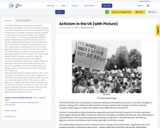
The United States has a long history of activists seeking social, political, economic, and other changes to America along with a history of other activists trying to prevent such changes. American activism covered a wide range of causes and utilized many different forms of activism. American sociopolitical activism became especially prominent during the period of societal upheaval which began during the 1950s. The African American civil rights movement led the way, soon followed by a substantial anti-war movement opposing American involvement in the Vietnam War, and later by vigorous activism involving women's issues, gay rights, and other causes. The United States remains a land of nearly constant change, and activists play a significant role in the ongoing evolution of American democracy. It seems likely that Americans will remain enthusiastic activists in the future. This exhibition is part of the Digital Library of Georgia.
This is a remix to include visuals within the TOC. Original at https://goopenva.org/courses/activism-in-the-us
As a teacher, I would use this as an online chapter to be read and consumed by the students on their own, with a socratic discussion to follow. This could also be a lead up to a project where the students choose on of the historical activism to expand on in their own civic duties.
University of Georgia Libraries. Activism in the US. Digital Public Library of America. April 2013. https://dp.la/exhibitions/activism.
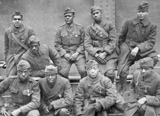
In this lesson, students will survey the extent of and experiences of African Americans in military service during US war efforts from the Revolution to the Vietnam Conflict using a Hyperdoc (see attached) that can be assigned using your LMS system.
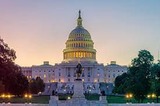
The lawmaking process, as described in the US Constitution, is essentially an alogorithm that allows an idea to become a law. In this lesson, students will analyze and evaluate the process for creating laws at the Federal level and create a flow chart that shows the lawmaking process in an alogoritmic sequence.
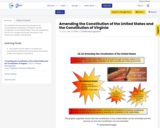
The students will describe the procedures for amending the Constitution of Virginia and the Constitution of the United States. They will understand why it is so complex along with focusing on the reasons for certain amendments.
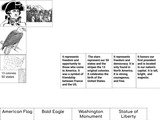
This assessment fulfills the requirements of a local alternative assessment for civics for the ASOL HS-C 2a.

In this learning experience, the students will complete a primary source inquiry into the impacts of Reconstruction on Black experiences in Virginia and the South. The students will use the Claim-Evidence-Reasoning structure to defend one of two claims.Students will analyze sources that depict/detail Black experiences and perspectives before, during, and after the Reconstruction. This learning experience will be most effective after students have been introduced to the what and when of Reconstruction.
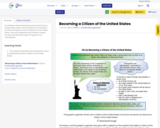
The students will describe the process of becoming a United States citizen and the reason for the writing of the 14th Amendment to the Constitution of the United States. They will understand how American society has become diverse through immigration and naturalization.
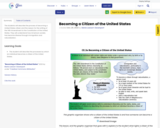
The students will describe the process of becoming a United States citizen and the reason for the writing of the 14th Amendment to the Constitution of the United States. They will understand how American society has become diverse through immigration and naturalization.
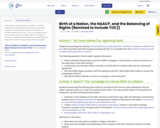
In this lesson students learn how Birth of a Nation reflected and influenced racial attitudes, and they analyze and evaluate the efforts of the NAACP to prohibit showing of the film.
This is a remixed version to include the lesson activities within the Table of Contents.
Original: https://edsitement.neh.gov/lesson-plans/birth-nation-naacp-and-balancing-rights
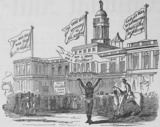
Students will investigate through primary and secondary sources the dynamics of the development of race relations in early colonial Virginia from court cases between 1640 to 1656. The story and cases of John Punch (1640), John Casor (1655), and Elizabeth Key Grinstead (1656) are known to be some of the first freedom suits in the Virginia colony. Students will then investigate slave codes from 1705 to determine how colonial officials justified the treatment of enslaved people.
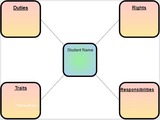
Use slides to cover the concepts of duties, rights, responsibilities, and traits. You can add pictures to the slides (or after) to showcase what they mean and/or have a discussion on where students see these being used. To reinforce that students can apply the difference between the four different categories of rights/duties/traits/responsibilities, have students create a citizenship web of themselves using either construction paper or a digital slide/page of who they are as a citizen. For further extension, have students add what each might look like for them as a citizen. This helps them to categorize and explain the difference between duties and rights, as well as understanding their basic first amendment rights and traits of a citizen.

Students will match the name, phrases and picture. The cards focus on the specific VDOE SOL essential knowledge, adapts to the required SOL 1 Primary resource learning components, and activates the multiple learning styles. The Task Cards allow multiple SOL strand concept review. The teacher can use them in a small group, tiered groupings, and independent study.